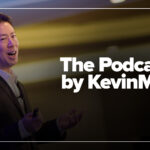Recently, while reading The History of Medicine by William Bynum, I was struck by a line that quietly reframed a great deal of what we claim to believe about our profession. Reflecting on how medicine has evolved, Bynum writes: “When in doubt, remember the Hippocratic injunction that health is most likely to be found in the middle way.”
That notion, nuanced, modest, and deeply clinical, feels worlds apart from the phrase now most loudly associated with the physician’s oath: “Do no harm.”
It might surprise many to learn that “Do no harm” is not part of the original Hippocratic Oath. The phrase “Primum non nocere,” Latin for “First, do no harm,” doesn’t appear in any version of the oath attributed to Hippocrates. In fact, it likely originated centuries later, possibly in the 19th century, and is often misattributed to Hippocrates himself. The earliest known printed use of “primum non nocere” in a medical context appears in the 1860s, credited to the English physician Thomas Sydenham or the American Worthington Hooker, depending on which historian you ask.
And yet, this late addition has become the most quoted and most misinterpreted principle in medicine. It adorns white coat ceremonies, hospital lobbies, and bioethics slideshows. It’s quoted by physicians and politicians alike. It has been flattened into a slogan, a badge of virtue, a kind of moral North Star.
But here’s the paradox: If taken literally, “Do no harm” makes medicine impossible.
Every time a scalpel touches skin, harm is being done.
Every time an SSRI is swallowed and causes even mild nausea, harm is being done.
Every time we sedate, inject, biopsy, intubate, irradiate, we are technically inflicting harm.
So what are we really saying when we invoke this phrase?
If “Do no harm” were a rule, we’d never treat a patient. We’d simply watch disease take its course, unchallenged. Because the truth is: Medicine isn’t about avoiding harm. It’s about understanding it, calculating it, and choosing it when it is the lesser evil.
Why is it important to discuss “Do no harm” at all? Because the problem lies in the disconnect between the phrase we’ve inherited as medicine’s moral rallying cry and the actual, lived experience of clinical practice. It is instilled from the very outset of a clinician’s training, echoed in white coat ceremonies, printed in ethics curricula, and spoken with near-scriptural reverence. But it bears little resemblance to the realities of practice, which are less about the clean execution of ideal principles and more about navigating the messy terrain of uncertainty, trade-offs, and clinical improvisation.
As is often the case when a rallying cry stands in contrast to the work it claims to represent, an unconscious dissonance begins to take root. The phrase promises clarity; the work demands ambiguity. And over time, the lived craft of medicine, its judgment, its instinct, its human nuance, becomes estranged from the slogans that once inspired it. As it must. Because that estrangement is not betrayal. It is evolution. It reflects the realities of what medicine actually is: uncertain, contextual, and irreducible to moral soundbites.
But dissonance, left unresolved, has a psychological cost. We stop thinking. We stop reflecting. We recite the phrase but no longer examine it. And so “Do no harm” continues, not as an ethical compass but as an unchallenged ritual, repeated more for comfort than clarity. It gives us moral cover. It creates the illusion that our intentions are enough, that our ethics are settled simply by invocation. But in doing so, it may discourage us from the harder, more essential task: weighing risk and benefit each time we intervene. The phrase soothes us into believing we are already being cautious, already being virtuous, when in fact, we may be defaulting to habits of intervention without pause.
American medicine is often criticized for being too aggressive, too quick to treat, to intubate, to operate. But as is so often the case, a profession’s greatest strength can also be its greatest weakness. Our bias toward action, toward doing something — anything, is fortified by a slogan that implies we are always anchored in safety. Under the verbal anesthesia of “Do no harm,” we may avoid the more uncomfortable reflection: Should we be doing this at all?
- Should we be offering hip surgery to a 90-year-old with severe congestive heart failure, someone already poorly mobile, dependent for most basic needs, and likely to emerge from anesthesia more disoriented, more delirious, and permanently worse cognitively than before?
- Should we be re-intubating a patient with end-stage COPD, already on maximal oxygen support, for the third time this month, when each intervention brings not recovery but prolonged suffering and prolonged dying?
- Is an antidepressant trial, or a new round of polypharmacy involving statins, supplements, and sleep aids, really what’s needed for someone struggling with end-stage dementia, whose distress may be existential, not chemical?
Some would argue that it is precisely in these moments that harm is being done, not by withholding care but by pressing forward with interventions that offer diminishing returns and growing burdens. Here, “doing something” becomes the source of injury. It is not inaction that wounds, but action cloaked in the language of help.
And yet, the way our culture of medicine has evolved, substituting aggressive treatment with palliative or comfort-based management is still too often seen as withholding care, as if the absence of intervention is an abandonment of duty rather than its most humane expression.
These are the kinds of ethical questions “Do no harm” should provoke, but too often, it silences them instead.
In fact, in modern practice, our functional definition of “Do no harm” has become increasingly regulatory. It’s less about nuanced clinical judgment and more about compliance with institutional guardrails, most visibly, the FDA’s black box warnings, Joint Commission (JCAHO) mandates, CMS performance metrics, and an expanding web of hospital quality policies, sometimes real, sometimes imagined. These frameworks have become the practical stand-ins for medical ethics, shaping what is flagged, what is tracked, and what is implicitly understood as “harm.”
But ask any frontline clinician in psychiatry, oncology, cardiology, or surgery, and they’ll tell you: These metrics rarely capture where harm actually happens. They miss the subtle calculations and gray-zone decisions that define the real art of medicine: a frail patient’s fall risk, a family’s quiet ambivalence, a child’s cognitive dulling after a medication change. These are the harms that don’t show up on compliance dashboards but live in the clinical margins every day.
If “Do no harm” is truly our ethic, then it must live in the gray areas, not just in the boxed warnings or the policy manuals but in the space where evidence ends and judgment begins.
Beyond the regulatory landscape, decision-making in American medicine is shaped by another deeply rooted ideal: patient autonomy. In many ways, it is the ethical bedrock of the U.S. health care system, a principle that insists the patient (or their legally appointed surrogate) is the final authority on medical decisions. This focus on individual choice is often cited as one of the greatest strengths of American medicine.
But like all great strengths, it can also be a great weakness.
In most parts of the world, especially in Europe and parts of Asia, decision-making in critical care leans more heavily on physician judgment or consensus-based models. But in the United States, clinical authority is often ceded, by law and by custom, to next of kin, health care proxies, or legal surrogates. It’s a uniquely American phenomenon in its extremity: empowering people with little or no medical training to make decisions about life-sustaining interventions, often under immense emotional duress.
And here’s where the paradox deepens: We expect family members to make decisions that even seasoned physicians struggle with. Whether to proceed with a high-risk surgery, to intubate one more time, to transition to comfort care — these are among the most complex, ethically fraught choices in medicine. Physicians wrestle with them. Teams debate them. Yet we routinely place this burden on a spouse, or a daughter, or a sibling, in the middle of the night, with no context, no training, and the weight of love pressing down on them.
Of course, the gut reaction of a loved one, when asked, “Do you want us to do everything?” is almost always, “Yes.” What else could they say?
And so, under the banner of autonomy and in the name of “Do no harm,” we sometimes end up doing exactly that: everything.
Even when everything is the most harmful choice on the table.
Add to this the ever-present specter of liability, the unspoken pressure to protect oneself professionally, and the result is a clinical culture that often favors doing more, not because it’s better medicine but because it’s safer documentation. In this environment, aggressive care becomes the path of least resistance: ethically complicated, clinically dubious, but legally and professionally defensible.
So maybe it’s time to rethink the very first introduction we give to future doctors. Not with slogans, but with substance. Not with borrowed mantras, but with context. A version of the oath that is both historically accurate and emotionally honest, one that prepares new physicians not just to inherit a phrase, but for what actually lies ahead: A daily discipline of uncertainty, discernment, and the courage to choose wisely, even when all options carry risk.
After all, the original Hippocratic Oath never said “Do no harm.” What it did say was this:
“I will follow that system of regimen which, according to my ability and judgment, I consider for the benefit of my patients, and abstain from whatever is deleterious and mischievous.”
— Hippocratic Oath, translated by Ludwig Edelstein (1943)
That’s not a soundbite. It’s accurate, practical, and, most importantly, honest about what this profession really demands. It reflects the complexity, the imperfection, and the deep humanity of this beautiful art we call the science of medicine.
But first, we need to accept that harm is not the exception. It is the rule. The act of intervention always carries it. The real question is whether, in each individual clinical situation, the harm we are about to do — and it is harm, quite literally — is warranted by the benefit we hope to achieve.
Because real ethics don’t live in mottos.
They live in the middle.
Sabooh S. Mubbashar is a psychiatrist.



















![Rebuilding the backbone of health care [PODCAST]](https://kevinmd.com/wp-content/uploads/Design-3-190x100.jpg)

